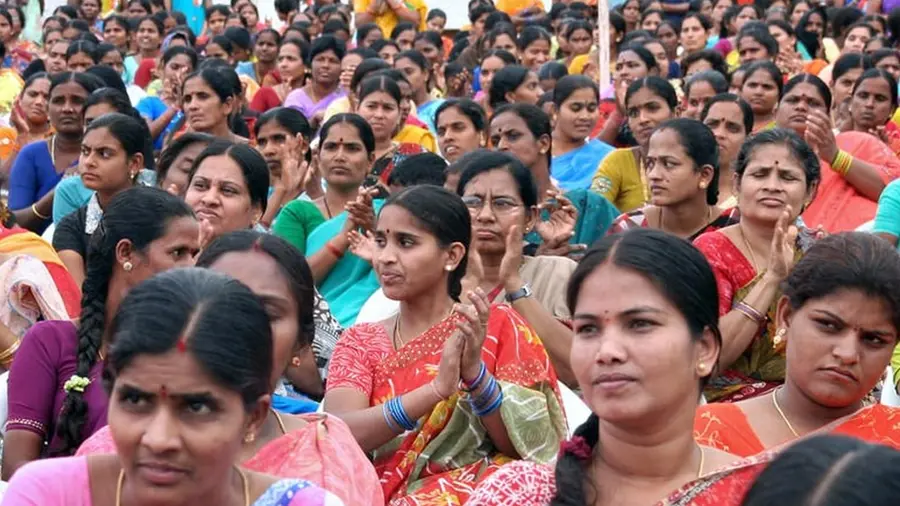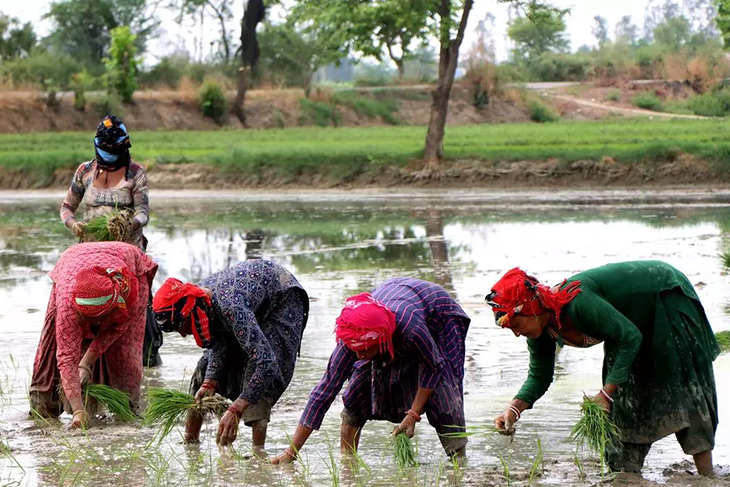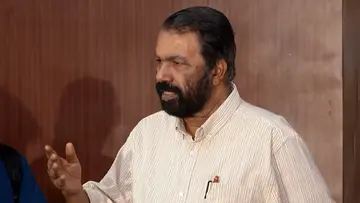Numbers Don't Lie: Unveiling the Realities of Women's Empowerment in India


Anie Anna Thomas
Published on Mar 08, 2025, 03:42 PM | 6 min read
On International Women’s Day, as the world celebrates the achievements of women and calls for greater equality, India stands at a crossroads—torn between progress and persistent challenges. For centuries, Indian women have been at the heart of the nation’s growth, breaking barriers and shaping communities. Yet, despite advancements in education, healthcare, and workforce participation, millions still grapple with deep-rooted inequalities, economic disparities, and safety concerns. While policies and initiatives have paved the way for progress, societal attitudes and systemic barriers continue to hinder true empowerment. The road ahead demands not just reforms, but a collective shift in mindset to ensure that Indian women can thrive, lead, and shape the nation’s future.
A Mixed Bag of Progress and Challenges: Women’s Empowerment in India
India’s journey toward women’s empowerment has seen notable progress, yet persistent challenges continue to hinder true gender equality. While improvements in literacy, workforce participation, and health have been made, deep-rooted societal norms and systemic issues remain significant barriers. Addressing these challenges requires not just policy reforms but a broader cultural transformation.
Education has been a key driver of empowerment, and India has made commendable strides in female literacy. According to the National Family Health Survey-5 (NFHS-5, 2019-21), the female literacy rate has risen to 77%, a substantial improvement from 65% in 2011. However, this progress is unevenly distributed. Kerala sets a high benchmark with a female literacy rate of 95.2% (NSO, 2023), the highest in India, leading to broader social benefits such as improved health outcomes and reduced fertility rates. Conversely, states like Uttar Pradesh (59.3%), Rajasthan (57.6%), and Bihar (53.3%) continue to struggle, with limited access to quality education, especially in rural and marginalized communities. The disparity in literacy rates highlights the urgent need for targeted policies to ensure truly inclusive progress.
One of the most pressing issues for Indian women is their limited role in the economy. According to the World Economic Forum’s Global Gender Gap Report 2023, India ranks 127th out of 146 countries in economic participation and opportunity. The female labor force participation rate (FLFPR) has been declining for decades, from 31.2% in 2011-12 to 25.1% in 2022-23 (PLFS). This decline is attributed to factors like lack of safe workplaces, inadequate childcare facilities, and societal expectations that prioritize women’s domestic roles over careers. In rural areas, women often engage in unpaid agricultural work, which goes unaccounted for in official statistics. Wage disparities persist, with women earning 19% less than men for equivalent work (WEF, 2023). Even in relatively progressive states like Tamil Nadu, where female workforce participation stands at 34.5%, and Maharashtra, which has implemented robust policies for women’s safety and economic inclusion, challenges like wage disparity and underrepresentation in leadership roles persist. Meanwhile, Bihar has the lowest female workforce participation rate in the country, at just 4.4% (PLFS, 2022-23).
Women’s safety remains one of the most pressing concerns in India. The National Crime Records Bureau (NCRB, 2022) reported 4,45,256 cases of crimes against women, a 15.3% increase from the previous year. Uttar Pradesh recorded the highest number of cases (56,083), followed by Rajasthan (45,058) and Maharashtra (39,526). Crimes such as domestic violence, sexual assault, and cyber harassment are on the rise, yet the justice system remains inadequate. Only 27% of rape cases result in convictions, according to the Commonwealth Human Rights Initiative (2023). Domestic violence affects nearly 70% of Indian women, as noted by Renuka Chowdhury, former Union Minister for Women and Child Development. The entrenched practice of dowry continues to fuel violence, harassment, and even deaths, with 8,233 dowry-related fatalities reported in 2022 alone. Even Kerala, despite its progress in literacy and healthcare, saw a 12% rise in crimes against women in 2022. The #MeToo movement and increased awareness have encouraged more women to report crimes, but the backlog of cases in courts is staggering.
Health and nutrition are crucial to achieving gender equality, yet disparities continue to impact Indian women, particularly in maternal care and nutrition. While India’s maternal mortality rate (MMR) has improved, dropping to 97 per 1,00,000 live births (Sample Registration System, 2022), rural areas still face significant healthcare challenges. Malnutrition among pregnant and lactating mothers remains critical, with over 50% of women aged 15-49 being anemic and 18.7% underweight (NFHS-5). Anemia is particularly severe in states like Bihar and Jharkhand, where it affects over 60% of women, heightening childbirth risks and impeding child development. In contrast, Kerala, with a strong public healthcare system, reports a significantly lower MMR (30 per 1,00,000 live births) and reduced anemia prevalence (36.3%). Nationwide, poor nutrition not only weakens women’s health but also has lasting consequences for future generations. Addressing these gaps through improved healthcare access and targeted nutritional support must be a national priority.
Political empowerment remains a significant challenge in India, with women's representation in state assemblies and Parliament remaining low. Women make up only 14.4% of the Lok Sabha and 11.8% of state assemblies (Inter-Parliamentary Union, 2023). Kerala has made notable progress, with women holding key positions in panchayats and municipalities, contributing to gender-sensitive policymaking. Women occupy 50% of seats in local self-governments, 54% in urban local bodies, 52% in gram panchayats, 51% in block panchayats, and 50% in district panchayats, reflecting the state’s proactive approach to political inclusion. However, at the national level, systemic barriers persist. The Women’s Reservation Bill, which proposes reserving 33% of seats in Parliament and state legislatures for women, has languished for decades, highlighting deep-rooted resistance to gender equality in politics.
Sustaining Progress for True Equality
To achieve true gender equality, there must be a shift in both policy and societal mindset. Education, economic inclusion, safety, and health must be prioritized with targeted reforms and grassroots efforts. The disparities between states, from Kerala's high literacy and healthcare achievements to Bihar's economic struggles and Uttar Pradesh's gender imbalance, show that a one-size-fits-all approach will not work. Empowering women is not just a matter of fairness; it is essential for India’s social and economic development. The future of the nation depends on ensuring that every woman has the opportunity to thrive, contribute, and lead a life of dignity. As India marches towards its goal of becoming a 5 trillion dollar economy, it cannot afford to leave half its population behind. This International Women’s Day, rather than celebrating progress with token gestures, the focus must shift to concrete action and collective responsibility. Policymakers, civil society, and communities must work together to create an environment where women can thrive, free from discrimination and violence. Only through sustained efforts can India truly achieve gender equality and unlock the full potential of its population.










0 comments